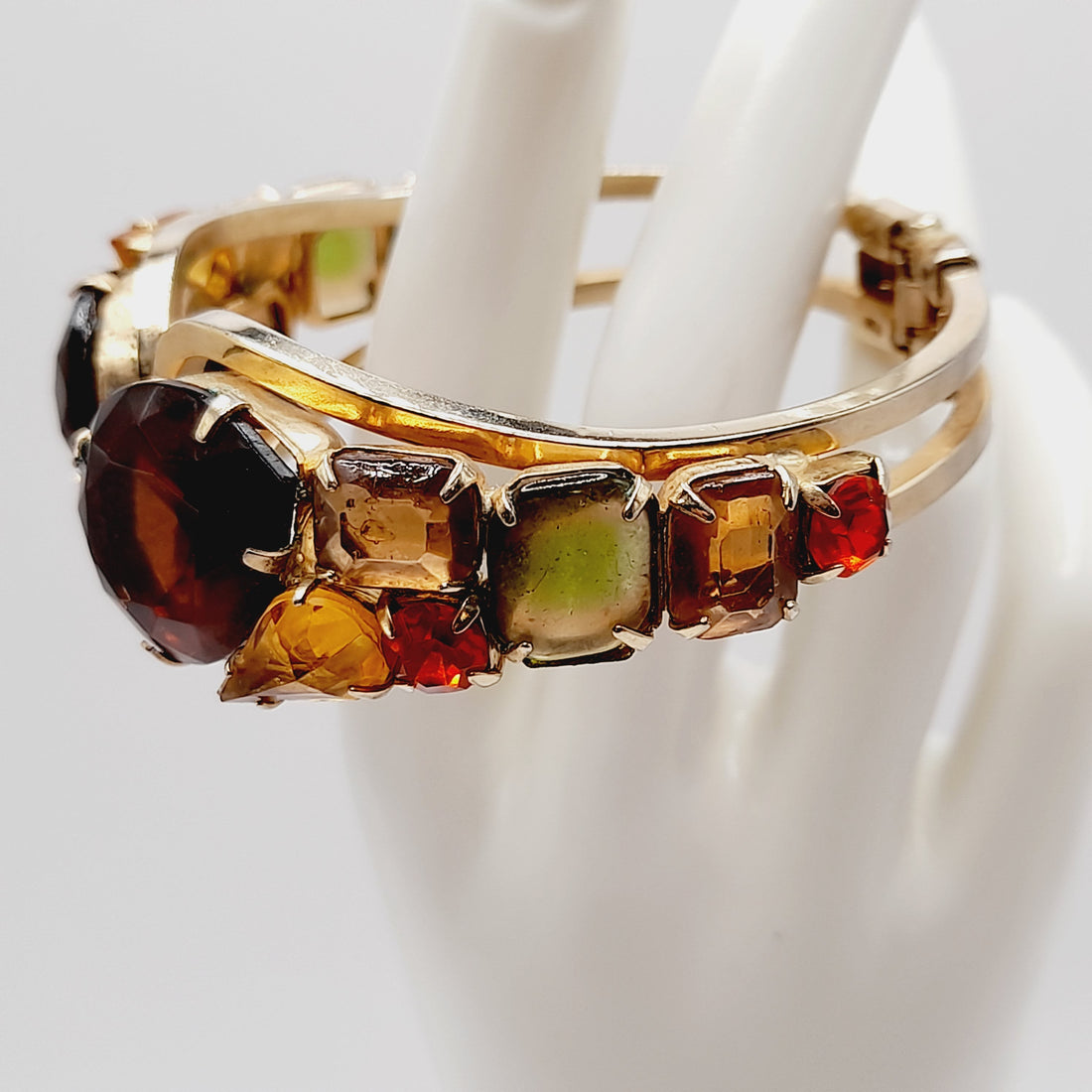
The History of Juliana Vintage Jewelry
Share

The History of Juliana Vintage Jewelry
The world of vintage jewelry is vast and fascinating, encompassing numerous styles, designers, and eras. Among the most sought-after pieces are those from Juliana Jewelry and other distinct vintage collections. This blog post explores the history of Juliana Jewelry, delves into the realm of D & E Jewelry (the company behind Juliana), and provides insights into the unique characteristics of vintage jewelry in general, with a special focus on identifying unsigned Juliana pieces.

Vintage Juliana Clear Beaded Brooch, D & E Reference #7518
|
The Origins of D & E Jewelry |
D & E Jewelry Company, officially known as DeLizza & Elster, was founded in 1947 by William DeLizza and Harold Elster in New York City. Unlike many jewelry manufacturers, D & E did not sell jewelry under its own brand name for many years. Instead, they designed and manufactured jewelry for other established fashion houses and retailers. This makes tracing their work a challenge, but also adds to the mystique and appeal of their creations.
|
The Juliana Line: A Revelation |
In 1967, D & E launched its own jewelry line named Juliana. This line was produced for only a brief period, ceasing production in 1969, making Juliana pieces relatively scarce and highly desirable among collectors. What set Juliana apart was its distinctive design aesthetic, quality materials, and innovative construction techniques. The brand became known for bold designs, vibrant color combinations, and the use of high-quality rhinestones and art glass stones. Although the Juliana line was only produced for a few years, it had a massive impact on the world of fashion jewelry.

Juliana Heirloom Large Clear Rhinestone Brooch, D & E Jewelry
|
Identifying Unsigned Juliana Jewelry |
Because Juliana jewelry was only signed for a short time, many pieces remain unsigned. Identifying these unsigned pieces requires a keen eye and familiarity with D & E's design characteristics. Here are some key features to look for:
|
· Construction: o Open-back settings o Figure-eight puddling o Use of rivets · Stones: o High-quality rhinestones o Unusual color combinations o Variety of shapes and sizes · Design: o Layered designs o Intricate metalwork o Asymmetrical arrangements |
Juliana jewelry is known for its distinctive construction. Look for open-back settings, which allow light to pass through the stones, enhancing their brilliance. 'Figure-eight puddling' refers to the unique way the solder is applied to the back of the pieces, forming a figure-eight pattern. D & E often used rivets in their construction, a detail not commonly found in other costume jewelry. Juliana pieces often feature high-quality rhinestones, including chatons, navettes, and pear shapes. A hallmark of Juliana is the use of unusual color combinations. Many designs involved layered designs with intricate metalwork and asymmetrical arrangements of stones. |
By familiarizing yourself with these characteristics, you can begin to identify unsigned Juliana pieces with greater confidence. Online resources, books, and jewelry collecting communities can also provide valuable insights and assistance.
|
The Enduring Appeal of Vintage Jewelry |
Vintage jewelry, including Juliana, continues to captivate collectors and fashion enthusiasts alike. These pieces offer a glimpse into the past, reflecting the styles, materials, and craftsmanship of bygone eras. Their unique designs and historical significance make them not only beautiful accessories but also cherished heirlooms.

Vintage Juliana Clamper Bracelet & Earrings, DeLizza Elster, Red AB Rhinestones
|
In Summary |
We have explored the rich history of Juliana Jewelry, tracing its origins to D & E Jewelry Company. Also sharing the unique characteristics of Juliana's designs, particularly those of these unsigned pieces, and emphasized the enduring appeal of vintage jewelry as a whole. By understanding the history and identifying features of these pieces, collectors can appreciate their beauty and significance for generations to come.